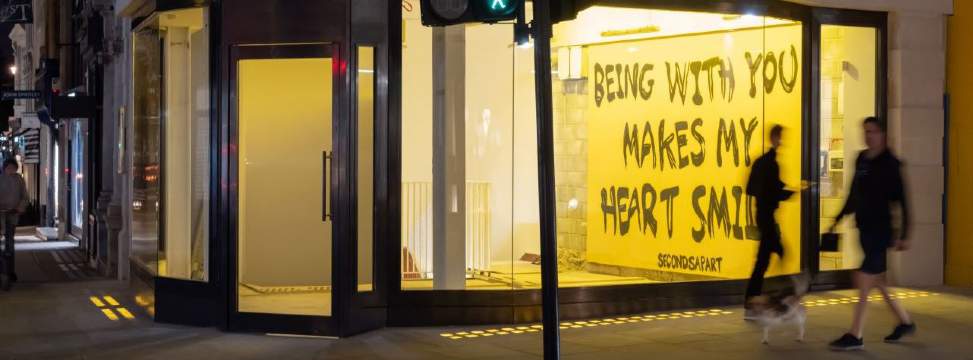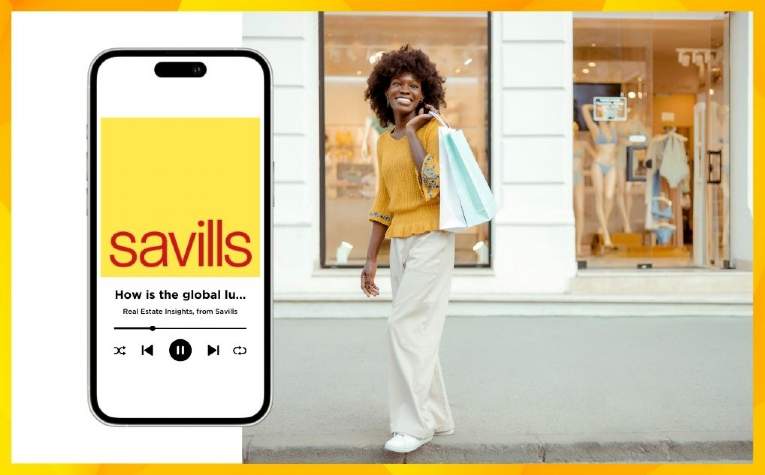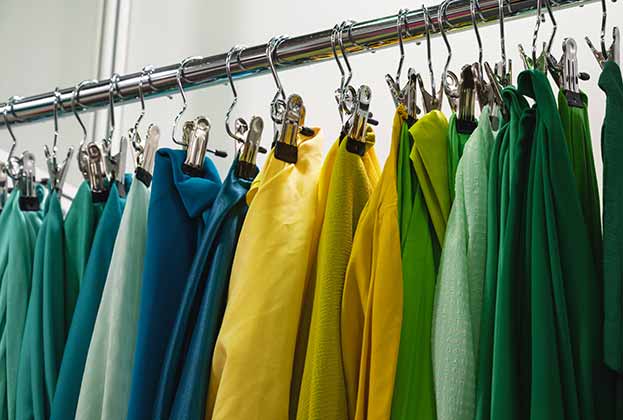As footfall gradually increases throughout London, office workers return to their desks and international tourism begins to pick up, there is a noticeable shift of activity taking place across the capital.
While some areas of the market are seeing a slower return than others, the luxury sector is continuing to show why it has been one of the most resilient retail sub sectors throughout the pandemic. In spite of Covid-19, we have seen a flurry of new store openings, investor appetite has shown no signs of waning and the street is currently witnessing a wave of ambitious, standout store refurbishments.
Just this month we have seen the launch of 110 New Bond Street (as seen on the above image), which forms part of a larger block under refurbishment from 107 – 110. The four ultra prime units, in one of the world’s most desirable retail locations, are undergoing a £10 million refurbishment, fronted by innovative graffiti installations and holographic video footage which has been a hit across social media. This sort of commitment from landlords is a hugely positive indicator for the ongoing confidence in Bond Street as a global luxury destination, and suggests that landlords have no doubt that consumer numbers will return to pre-pandemic levels.
This assurance is highlighted further by prime yields for Bond Street holding steady over the course of the past two years. Indicative prime yields remain at pre-pandemic levels of 2.75 per cent, in contrast to other key streets in the West End which have seen yields move out by 25-50 basis points. Furthermore, our research has shown that Bond Street alone was accountable for over half of all retail investment in central London in the first half of this year, with activity continuing throughout H2.
Although spend on personal luxury goods declined by an estimated 23 per cent in 2020, the forecast for growth over the coming years remains positive. Based on best case scenarios, it is predicted that luxury spend will be ahead of 2019 levels by 2023, with average annual growth of between 7 and 11 per cent. If you also consider that many consumers enjoy buying luxury products from a physical store, as opposed to online, this certainly paints a positive picture for the sector’s occupational market.
Even prior to Covid-19, we were beginning to see many high end brands turn their focus to larger flagship stores on the best luxury streets, and Bond Street is in the perfect position to capitalise on this. We have already seen a number of luxury brands relocate from peripheral locations, with Celine, for example, relocating from Mount Street to open its new Bond Street flagship earlier this year.
While there are clearly still challenges to overcome, the luxury market is certainly in as good a position as any to bounce back strongly from the pandemic. London will once again regain its position as one of the most visited cities in the world, and with that we will see the return of international spend. What’s more, with domestic expenditure also set to grow, due to the increasing number of high net worth individuals living in the city, the future looks optimistic for London’s prime retail scene.
Further information

.jpg)



.jpg)




